Classic French white bread
A recipe from cooking-ez.com June 6th 2017316 K4.3
For 4 loaves, you will need:
- 1 1 kg plain white flour (French Type 65)
- 2 620 ml water
- 3 18 g fine (or table) salt
- 4 15 g yeast
- 5 100 g Soured dough (optional)
- Total weight: 1,655 grams
Times:
| Preparation | Resting | Cooking | Start to finish |
|---|---|---|---|
| 40 min. | 2 hours 30 min. | 40 min. | 3 hours 50 min. |
Step by step recipe
| 1 | Put into a food-processor bowl: 1 kg plain white flour (French Type 65), 18 g fine (or table) salt, 15 g yeast and, if possible, 100 g Soured dough. | 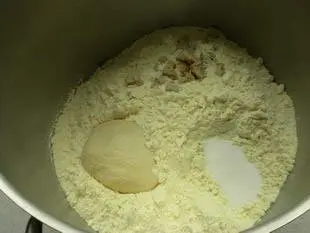 |
| 2 | In bread-making, the water temperature is always important. It's not a fixed value, but related to 3 other temperatures: 1) the temperature of your flour, 2) the room temperature in your kitchen, and 3) the basic temperature of this recipe, which is 48-52°C. You can calculate the temperature of the water for this recipe in one click, using this small calculator. | 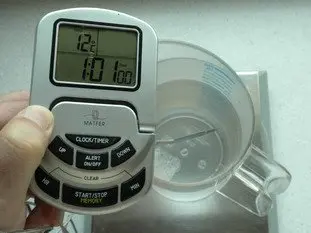 |
| 3 | Add 620 ml water at the right temperature, then knead on the slowest speed until the ingredients are well mixed (about 3 minutes). Note: For the best way to knead, see: A few tips for effective kneading at home. | 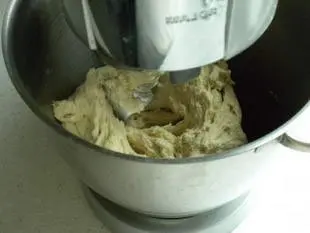 |
| 4 | Knead a little faster (the next speed up) for around 15 minutes, until the dough temperature reaches 24°C (75°F). You could also chech the dough by trying the window-pane test. | 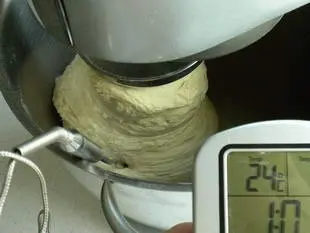 |
| 5 | Tip the dough out onto a lightly floured worktop. | 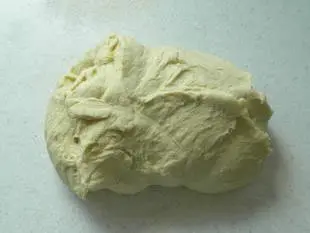 |
| 6 | Gather the dough into a ball and transfer to a large, clean bowl. Cover with a sheet of plastic. Leave to rest for 15 minutes. | 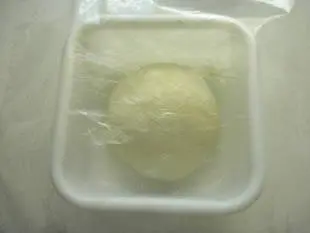 |
| 7 | After this time, tip the dough onto a lightly floured worktop and cut into pieces of about 500g each. | 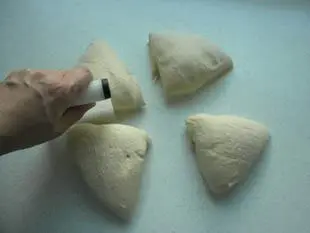 |
| 8 | You can weigh each piece to check, as it is not easy to do this by eye. Note: using the quantities stated, you can expect to obtain 1750 g of dough, to divide up as you choose. | 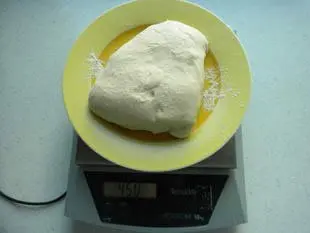 |
| 9 | Form each piece of dough into a ball. As the gesture for doing this is difficult to describe, you can see it in the short video on the right. |  |
| 10 | Place the balls of dough on the floured worktop, dust the tops with flour and cover with a sheet of plastic. Leave to rest for 15 minutes. This allows the dough to "relax". | 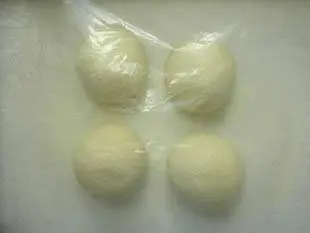 |
| 11 | Shape the loaves. As the gesture for doing this is difficult to describe, you can see how it is done in the short video on the right. |  |
| 12 | Place each loaf in a banneton (French raising basket), dusting the bottom generously with flour first. Cover with a sheet of plastic and leave to rise for 2 hours. | 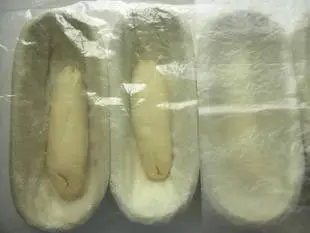 |
| 13 | Preheat the oven to 240°C (460°F). Turn the loaves over onto the peel (for a wood-fired oven) or onto a baking sheet (for a conventional oven), slash the tops and bake... |  |
| 14 | ...for 30 to 40 minutes. Note: As when baking any bread, you should ensure that the oven is filled with steam for the first 15 minutes of baking. This page shows you how; it really is the secret of golden-brown, crusty loaves.. | 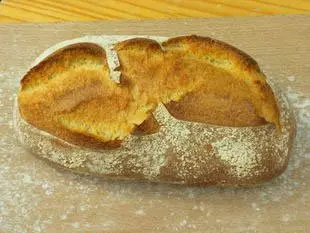 |
| 15 | You will notice how the holes in the bread are regular in size. This comes from the action of the yeast which, unlike leaven, produces even bubbles. | 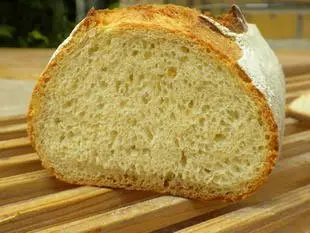 |
Remarks
You might also like to take a look at this page about making your own bread.View this recipe : https://cooking-ez.com/four/recipe-classic-french-white-bread.php
January 7th 2026.
